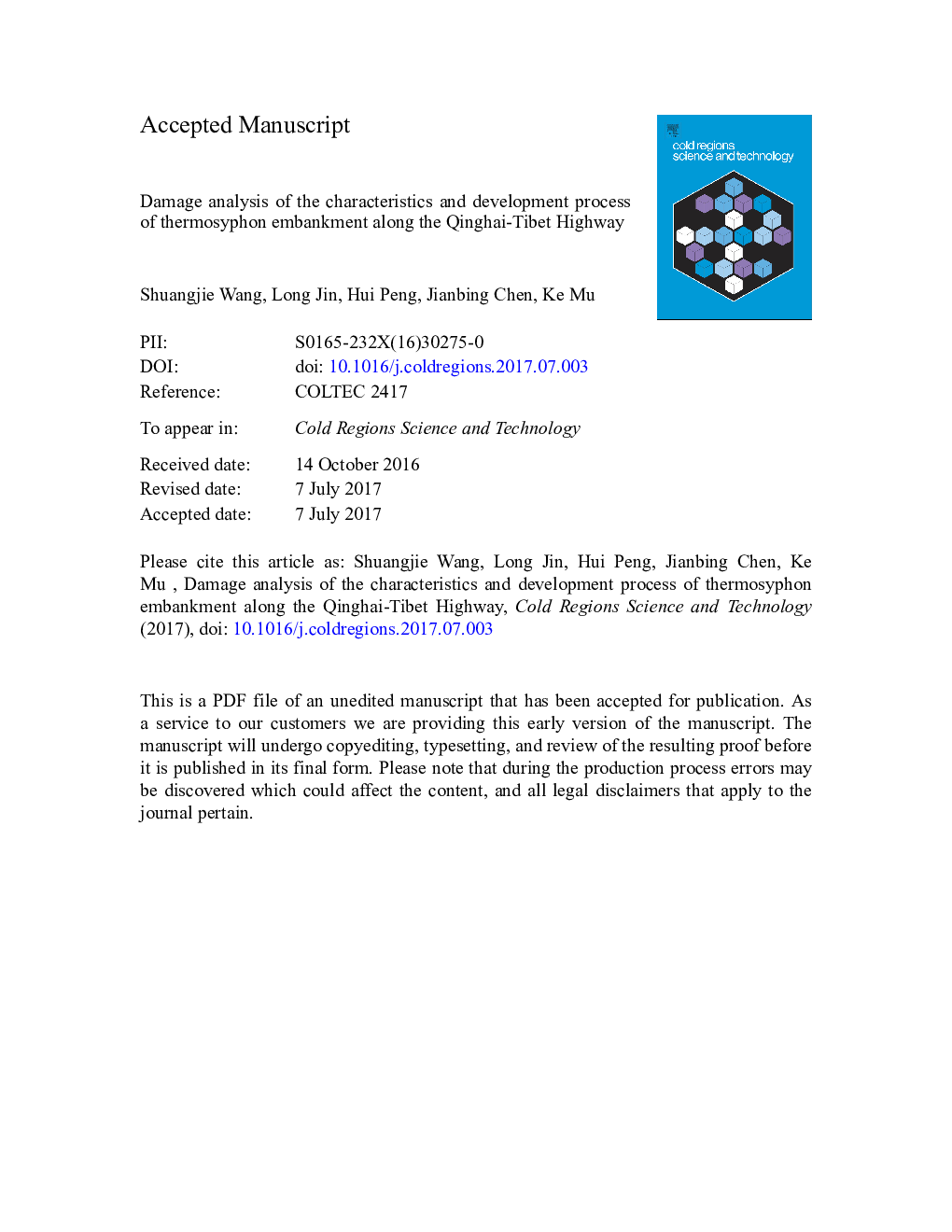| Article ID | Journal | Published Year | Pages | File Type |
|---|---|---|---|---|
| 5779344 | Cold Regions Science and Technology | 2017 | 46 Pages |
Abstract
To analyse the damage characteristics of thermosyphon embankments in a permafrost region, the Qingshui River section along the Qinghai-Tibet Highway (QTH) was used as a case study in which a field investigation and drilling were performed. The field soils were sampled, and their water content, dry density and compaction degree were tested in the laboratory. Based on the measured temperature data of the thermosyphon embankment, damage characteristics and possible associated causes were analysed. The major damage found in thermosyphon embankments was a longitudinal crack, which developed 1.0 to 2.0Â m away from the thermosyphon. In partial sections, waves and other damage also occurred. The damage was primarily attributed to the non-uniform temperature distribution, which resulted in a non-uniform distribution of the mechanical properties of the embankment filling. Under a heavy traffic load, stress concentration phenomena occurred at the freezing-thawing interface that gradually developed into a longitudinal crack with increased highway operation. The embankment damage history, rainfall seepage, ponding near the embankment and freezing-thawing cycles further accelerated the development of damage along the thermosyphon embankments. According to the characteristics and causes of thermosyphon embankment damage, precisely computing the cooling efficiency of thermosyphon in the design stage is necessary to prevent freezing-thawing interface waves resulting from excessive cooling effectiveness, to reduce thermal erosion from ponding near the embankment by improving embankment drainage systems, and to set necessary structural measures at thermosyphon embankments that can improve their strength.
Related Topics
Physical Sciences and Engineering
Earth and Planetary Sciences
Earth and Planetary Sciences (General)
Authors
Shuangjie Wang, Long Jin, Hui Peng, Jianbing Chen, Ke Mu,
